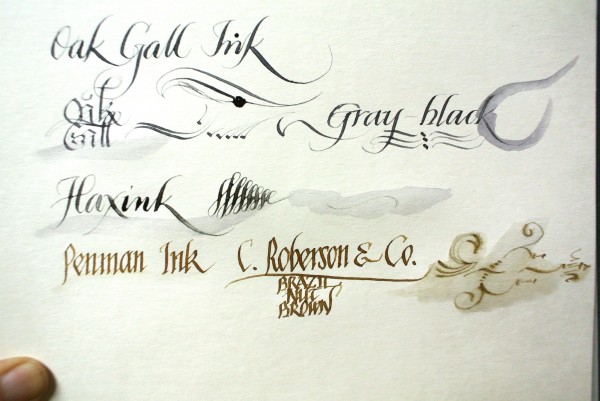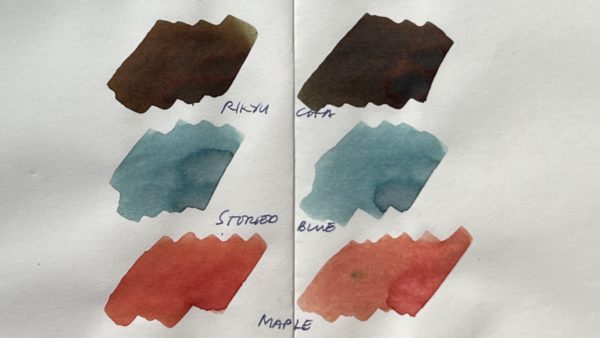“Oh look, parchment.”
“Yes, it used to be part of a goat, you know.”
We are divorced from the origins of what we use. We don’t touch soil before we eat grains. We don’t spin and sew to keep out the cold. We have mechanized our production, our consumption, and our spirits.
I admire those who try to remind us of what we were. I don’t advocate tearing down modern society and its assembly-line touchscreen glories; I am too much a child of my age. I do advocate a certain mindfulness. Use what you buy, create from what you consume, give away what you can’t use soon.
Making these inks required time and patience, and I hope those qualities come in the bottles, just like natural ingredients and fade resistance.

Penman Ink by C. Roberson & Co. has a Natural Historical line, every color a variation on subdued. Haxink is iron gall ink, made “to an ancient recipe.” The Oak Gall ink is similar to a 1798 recipe, by Scriptorium am Rheinsprung. (I love how they describe its action: “Unlike most other inks which sit on the surface of the support, Oak-Gall-Ink depends upon a very mild acidic quality that bites into the paper or vellum to create a pemanent mark.”) They recommend leaving the bottle uncapped for several days to allow the ink to oxidize and become even darker.
All these writing samples are fresh from the bottle.

The inks look beautiful on paper with a little texture. I don’t think there’s anything in the color or surface quality of any of these inks that you can’t get from modern ones, unless you are specifically looking to reproduce old documents with historical accuracy. I don’t think your friends can tell you grew your own food unless you told them.
Perhaps what makes these inks beautiful is not what they look like, but what they are.


